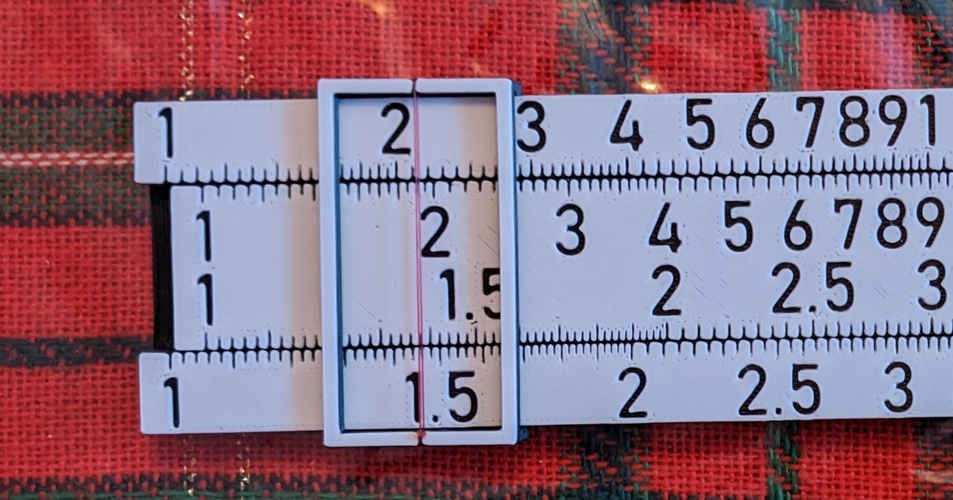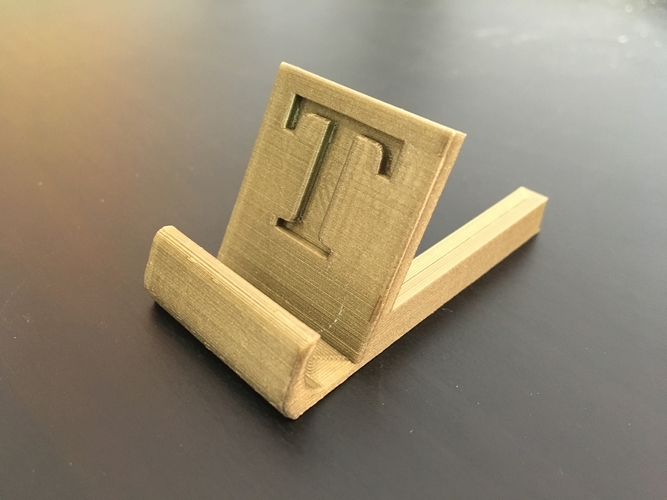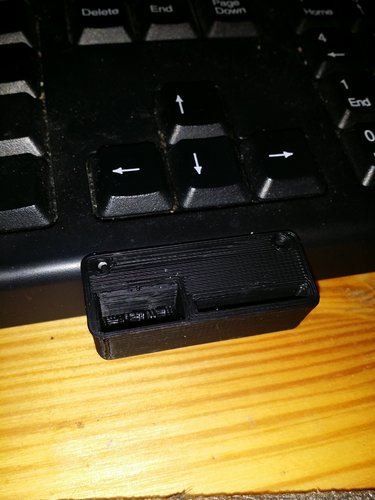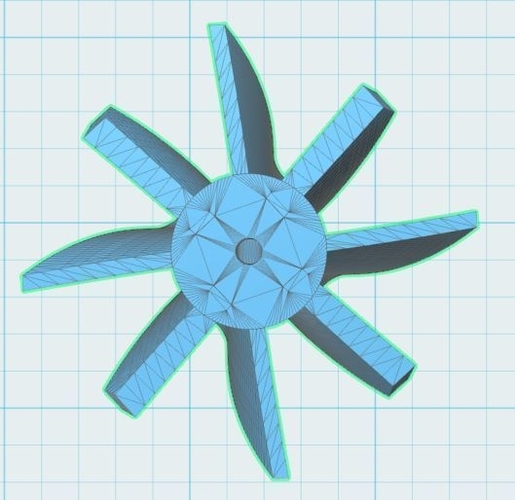
Description
3D model description
To keep the slide rule alive and accessible to a a new generation of math enthusiasts I present to you:
A basic slide rule containing the just the basic scales for learning on with the A, B, C and D scales. A and B are the top two scales which repeat and C and D are the bottom two scales
To multiply a number by another number, place the number "1" on the C (second from bottom) over the number you want to multiply on the D (bottom) scale. Locate your multiplier on the C scale and the answer is beneath it on the D scale.
The same is true in reverse for division, EX: When 2 is over 4, 1 is under 2.
If the multiplier would take you off-scale then line up the 1 on the right side instead and find the answer the same way.
If your multiplication would take you to a number higher than ten, simply, then start counting the notches on the outer scale after moving past "1" as 10s ex 1.5 = 15. The same can be true in reverse as 1.5 could also be read as 0.15.
An example of this in multiplcation: When 1 is under 8, 8 on the D scale is under 6.4 and the answer is 64. An Example in division: When 4 on the under 1, 1 on the D scale is under 2.5 and the answer is 0.25
If you are comfortable handling tens places with scientific notation, then you can use this tool to multiply number of any magnitude by numbers of any other magnitude. "4" on either scale can represent 0.4 just the same as 4 million.
The Slide rule also does ratios: If x/3 = 7.2/4.6 then when 7.2 on the outer scale is over 4.6 on the inner scale, X is on ther outer scale over 3.
No cross multiplication necessary.
If you create a fraction on the scales, every version of that fraction is represented across the scales.
The top two scales can be used in the exact same way as the bottom two scales, albeit at lower precision because the numbers are closer together, but their main function is that the number on the upper scale is the square of the number on the lower scale. I.E. 4 on the top scale is over 2 on the bottom scale, 1.6 (or 16) on the top scale is over 4 on the bottom scale.
Enjoy.
3D printing settings
0.4 mm nozzle
Print in place for the scales. May have to flex a bit free up the plastic on first use.
Print the window separate. Use fishing line or thread as the hairline.
I print my first 2 layers in white for the text and notches to have good contrast, then the rest in black.
Tollerance are 0.2 mm between the inner and outer scales. Lettering and notches are engraved in the top surface 0.4 mm.
Notches are 0.3 mm wide, a good first layer calibration is essential
Scale is 251 MM long






Comments (1)
Sign in to leave a comment.
I love this design. It's simple and easy to read. I have been looking for a hexadecimal slide rule, so instead of ten places there would be sixteen. I don't think it exists, but if somebody could make one, you are the first I've seen that gives me hope. e.g. in decimal 8*9=72 but in hex 8*9=0x48. Is there any chance that you could produce such a thing? I tried to purchase this design and will come back to it but there was a server error.